The Irish Times' Generation Emigration project is on the hunt for the best Irish pub in the world outside Ireland. Why? Because the best Irish pubs abroad are not simply boozers. They're also unofficial community centres for our emigrant population, social outlets for Irish people far from home, and the focus of sporting and cultural activities for the diaspora.
The Irish pub is “one of the most underappreciated tools of Ireland’s engagement with the diaspora over the decades”, according to Diaspora Matters, an international consultancy that recently placed the pub abroad among its “top 25 Irish diaspora initiatives”.
An extensive survey of the needs of Irish communities abroad by the Clinton Institute at University College Dublin last year also found that the pub still has an important role to play in supporting emigrants, whether they’ve been abroad for decades or have just arrived from Ireland.
With an estimated 7,000 Irish pubs globally, from Moscow to Mozambique, the quality and authenticity of establishments differ; most of us have ended up in a bar abroad at some point where the only Irish thing about the place is the name above the door.
But we want to look beyond the neon shamrocks and shillelagh kitsch to find the pubs that offer Irish people abroad a genuine and rewarding piece of home away from home.
We're inviting readers to submit a 500-word love letter to their favourite Irish pub, here. We want to know about its authentic Irishness, its Irish staff and customers, what ambassadorial and cultural role it plays, its social responsibility, its food, its coverage of Irish sports, its modernity or tradition, and its "craic factor", as well as your memories of times spent there.
We are also interested in establishments with unique qualities or eccentricities, or places that have innovative Irish cuisine and niche products.
Joining me on the judging panel will be Diageo's corporate-relations director, Liam Reid, and the chief executive of the Irish Pubs Global Federation, John Byrne. Ten shortlisted pubs will be visited by an independent assessor before the judges decide on a winner.
Full terms and conditions here. We look forward to reading your account. The winning pub will receive an award from The Irish Times, and the person who pitches it will get a parcel of Irish goodies for their efforts.
[ Generation EmigrationOpens in new window ]
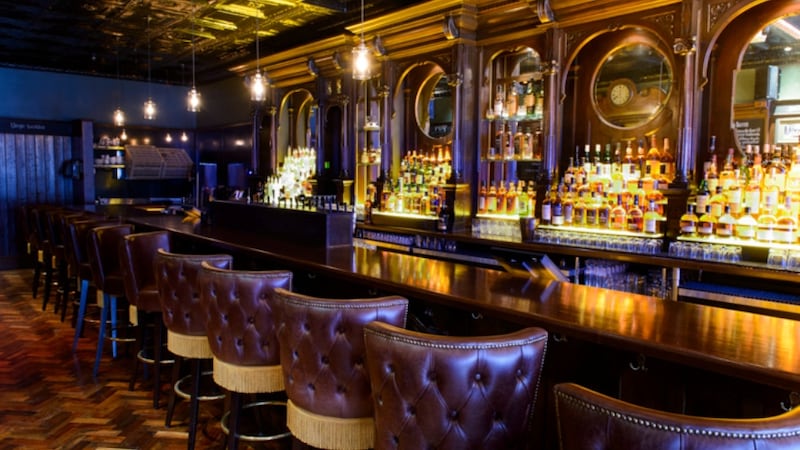
Rí Rá Georgetown, Washington DC
I have darkened the doors of some unusual Irish pubs on American soil. The strangest was O’Kelly’s Irish Bar, on Guantánamo Bay naval base, in Cuba, home of the notorious prison. The bar styles itself as the only Irish bar on communist soil. The Filipino staff had never heard of the concept of the lock-in. Strange, given its location.
Washington DC has several friendly Irish pubs. They include the Dubliner, a Capitol Hill institution. The pub is owned by Danny Coleman, who, as a joke, was painted into the GPO during the 1916 Rising in a replica of Walter Paget's Birth of the Irish Republic that hangs on the back wall. A smiling Coleman takes the place of Thomas Clarke.
Off Dupont Circle is James Hoban’s, aka “the Charlie Bird club for lonely foreign correspondents”. The pub, owned by a barrister-publican named Patrick Whelan, was a haunt of the former RTÉ reporter and is popular with off-the-boat Irish.
My favourite is Rí Rá in Georgetown, owned by the Dubliners David Kelly and Ciaran Sheehan and one of a chain of Irish pubs started in North Carolina in 1997.
Just over a year in business, this beautifully designed bar is as close to a Dublin pub as you will get in Washington. In fact it is a Dublin pub: the Victorian interior came from Gerry Nangle's pub in Summerhill, demolished in 1969.
Behind the bar is a slightly charred statue of St Patrick rescued from a burning building on Patrick Street in Cork in 1920. The theatre to the right of the bar has panelling and columns from the Theatre Royal on Hawkins Street in Dublin. The cabinets in the Whiskey Room come from Madigan’s watchmaker and jeweller, on Ellis Quay in Dublin, and the panelling from a Royal Bank of Ireland branch on Baggot Street.
“We are hoity-toity here in Georgetown, so we had to take it up a notch,” says Deb Klein, Rí Rá’s assistant general manager.
- Simon Carswell, Washington Correspondent
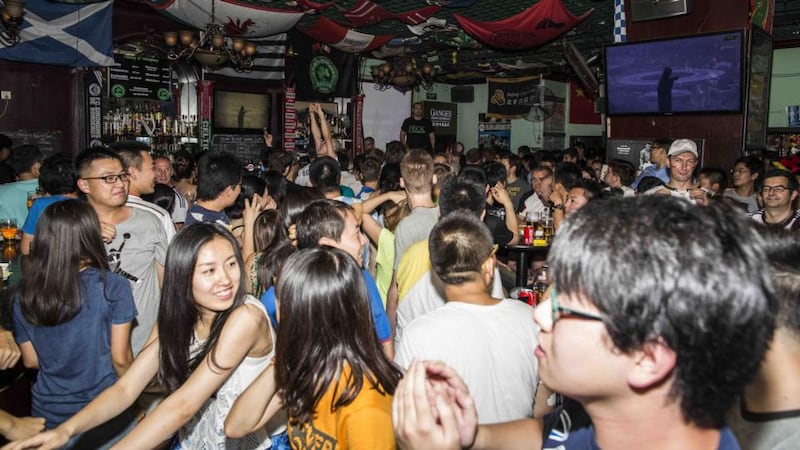
Paddy O’Shea’s Beijing
When Declan Kelleher, the ambassador at the time, climbed on to the pool table (since disappeared) to launch Beijing’s only Irish-owned Irish pub, in 2007, something changed in the Chinese capital.
There had been Irish pubs before, generally Chinese-owned and Irish in name only, or pubs that became Irish, such as the Hidden Tree, owned by Belgians. But Paddy’s brought it all together.
A year after the pub opened the Olympics came to town, and it became a social gathering point for Olympians and people looking for tickets – everyone who watched the Irish boxers win got their passes to the stadium at Paddy O’Shea’s, I’m sure of it. And the whole Irish community celebrated the medals there afterwards.
The Chinese bar staff have tolerated, even enjoyed, having my children there to watch soccer or Gaelic matches. One day we managed to watch hurling, rugby and soccer all at the same time.
Paddy’s is also a great place to meet people passing through. Over the past eight years I’ve met oil engineers en route to Xinjiang province, luxury-car salesmen, Riverdancers, English teachers, Nigerian diplomats, Welsh musicians, US investment bankers (a lot of them) and a man who claimed to be on the run from international law-enforcement agencies but wouldn’t tell me why.
In 2007 Paddy’s was an expat scene, but now there are tables full of Beijingers there to watch the football – even rugby on occasion – ordering curry from the Indian restaurant upstairs to go with their Irish stout and cider.
- Clifford Coonan, Beijing Correspondent
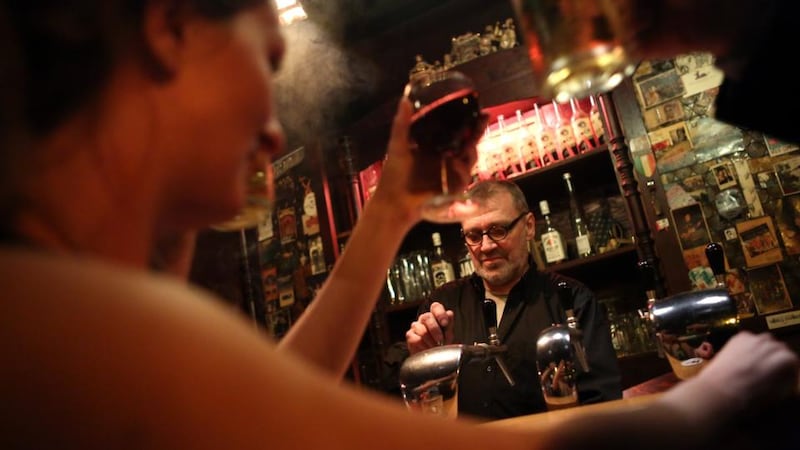
Alt Berlin Berlin
I have a secret fondness for mediocre Irish pubs. Not the booming, €5-a-pint ones, such as the Kilkenny Pub in Hackescher Markt or the Oscar Wilde on Friedrichstrasse, with their cheery threats of pub quizzes and live music, but the sparsely populated, faintly postapocalyptic ones where the barman looks startled when you enter and baffled when you announce your Irishness.
There used to be one around the corner from my apartment in Kreuzberg called the Mrs Lovell Pub. It served a halfway-decent pint of Guinness and the linoleum was always slightly tacky underfoot, evocative of a late-night lock-in 10km from your off-season holiday bungalow.
Then there is the Dunmore Cave in Neukölln, another Irish pub where Irishness seems to be refreshingly irrelevant. Depending on your point of view, the big draw of the Dunmore Cave is either the all-you-can-eat ribs offering on a Thursday night or the sensational mullet worn by the barman.
To drink in these places is to revel in the beautiful strangeness of expat living: downing Jameson to the syrupy strains of Schlager music; nuclear-disarmament posters from the 1980s displayed alongside the obligatory Georgian doors and toucans.
But my favourite Irish pub in Berlin is neither Irish nor even open for business. A night in the wood-lined back bar of the Alt Berlin, on Münzstrasse in Mitte, was the experience closest to drinking in an actual Irish pub.
Opened in 1893, Alt Berlin was Mitte’s oldest bar and reportedly a favourite of Bertolt Brecht, Alfred Döblin and Quentin Tarantino. There was nothing Irish about it – no Guinness on tap, no dusty ploughshares, no Tayto behind the bar – but, like my favourite pubs in Dublin, drinking was taken seriously there, as were conversation and toilet-door graffiti.
The staff were short on schmoozy charm, but if you caught their eye they’d nod and bring you a glass of what you ordered the last time, which is all the charm I need, frankly. In spring of 2014 Alt Berlin closed after a hike in rent. A frozen-yogurt shop has opened just up the street, and Adidas has moved in a few doors down. It all feels rather like Dublin in the 1990s, and not in a good way.
- Louise East

PJ O’Brien’s Sydney
Working in the late, unlamented Kitty O’Shea’s in Sydney in 1992 nearly put me off Irish bars abroad for life. You rarely get to see people at their best when they are three sheets to the wind, which a great many of its customers were on weekend nights.
But there are a lot more Irish bars, and Irish people, in Sydney now.
I occasionally go to PJ O’Brien’s, in the city centre, at night to watch soccer, rugby or GAA games from home, but I am far more likely to be there for lunch. The closest I get to alcohol on such occasions is the beef and Guinness pie.
But PJ’s sells a lot of stout in the traditional way, too. It is generally the top seller of Guinness in New South Wales, although nationally it falls behind several bars in Perth, a reflection of how many young Irish people are now living in Western Australia because of the mining boom.
Sometimes walking into PJ’s takes me back to childhood visits to Ballybunion – there are a lot of sunburnt Irish males wearing sandals and shorts. PJ’s has a friendly atmosphere and a welcoming layout, which makes it look and feel like a proper Irish pub rather than a beer barn with a few signs telling you how many miles it is to Dublin.
Its location in the city also means the crowd is a little bit older than in bars in, for example, Bondi Junction.
Billy Cantwell, a Meath man, has published the Australian Irish Pub Guide since 2004. He says the number of Irish bars down under has ebbed and flowed since then. "There was a time when almost every new pub that opened in Australia was an Irish pub," he says. "Inevitably, the concept was watered down and diminished, and it became almost a negative for a while; it became a cliche. That led to Irish bars closing down or changing to a different theme or marketing idea."
Cantwell says that few of Australia’s Irish bars are owned by expats, although many owners have Irish roots. “The O’Brien family, which owns PJ O’Brien’s, are Irish-Australian and proud of their background. That’s a good example of people who don’t see opening an Irish bar as something you just pluck off the shelf. They support a lot of Irish community events.”
- Pádraig Collins

St Stephen’s Green Mountain View, California
If you’re Irish you’re not really supposed to admit to a soft spot for Irish pubs. They are, we tell ourselves, strictly for people who say “St Patty’s Day” and regard green beer as an acceptable form of celebration rather than the most savage assault on the national identity since the Penal Laws.
But if you spend enough time hanging around the pseudo-sophisticated wine bars and cocktail lounges that pass for nightlife in other countries you start to see the charm of a bit of shillelaghs-on-the-ceiling tat.
I have more than a passing affection for the Irish pub. I went to Paris to study in 1995, expecting to spend my time between lectures being wooed by Frenchmen in smoky cafe bars. Instead I got a job at the James Joyce pub in Porte Maillot, and promptly fell for the Irish barman.
It was partly nostalgia for this, and partly the name, that drew me to the St Stephen’s Green, on Castro Street in Mountain View, when the Irish barman (now my husband, and no longer a barman) and I moved to Silicon Valley in California at the end of last summer.
The St Stephen’s Green is not your average Irish pub, but then Mountain View is not your average American town. It is home to Google, LinkedIn, Mozilla and Symantec, so it has a young, wealthy and diverse population.
The St Stephen’s Green has a terrace for summer drinking and people watching. Inside it is tat-free, and dark wood panelling and exposed brick offer just about the right amount of Irishness.
If it’s total authenticity you’re after be warned: it multitasks as a sports bar, so there are at least a dozen big screens showing whatever the evening’s offering to the world of sport is. It also hosts Wednesday trivia nights.
Its very decent menu includes shepherd’s pie, corned beef and cabbage, and Guinness steak pie.
- Jennifer O'Connell
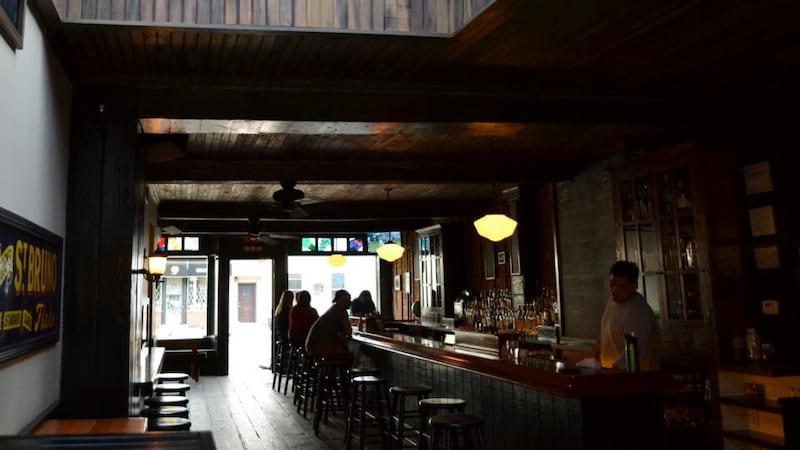
Harefield Road Brooklyn, New York
Harefield Road has been our local since just after we moved to Williamsburg, in Brooklyn, 10 years ago. There was almost nothing on that stretch of Metropolitan Avenue then except an old-time camera shop and a real-estate agent.
And then, suddenly, there was this beautiful bar, all rich, smooth wood, and art-deco sconces, and little stained-glass murals, and shadows and tealights flickering in the booths.
It was named for the London-Irish neighbourhood in which one of its owners, Seán, had family roots. The other owner, JB, is from Limerick, so between the two of them it’s certainly an Irish bar – but in practice it’s an Irish bar only in the sense that JB is great for a quick, eye-rolling confab about whatever the headlines from home are this week.
There are no other signs of Irishry, but Harefield is the local.
Harefield on a Sunday afternoon, cadging a read of their copy of the Times.
Harefield on one of the Sunday evenings when they used to have Tamar Korn and her band in to play New Orleans jazz, and old Italian-American guys kept perfect time with the hipster kids practising their Juilliard dance steps.
Harefield on a Monday night, when it’s quiet: tealights are glowing on the wide wood tables, and John H and the contents of his iPod are behind the bar.
Harefield in a snowstorm, looking out through the big windows at Metropolitan Avenue becoming a blanket.
Harefield the night before Thanksgiving, when only the blow-ins are left in town – a sort of reversal of Christmas Eve in Dublin, when all the culchies leave.
I don’t have a local in Ireland any more, although that doesn’t stop me looking for them, stalking them, whenever I visit, but I go to Kehoe’s and Grogan’s and the Stag’s Head and Mulligan’s looking not for what’s in them now but for what they used to have. Looking for ghosts. Harefield seems haunted by nothing; nothing but candlelight. Although, of course, that’s an illusion, too.
- Belinda McKeon
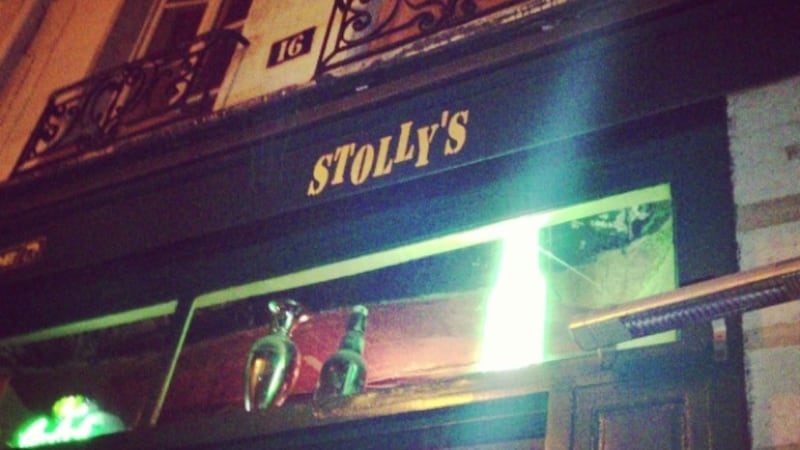
Stolly’s Paris
When I first started travelling abroad alone, someone who knew Paris well brought me to Stolly’s in the Marais, a bar and neighbourhood I quickly fell in love with. A snug with great music and honest prices, it is a tiny place on a passageway off Rue de Rivoli. I’m not even sure if it is Irish, although everyone I knew in Paris over the years thought of it as such.
It lacked fiddles suspended from the rafters and books of Yeats poetry on dusty shelves, but it had a conviviality that meant it was honorary Irish, whatever its official status.
I’ve lived in many places since. San Francisco had Ireland’s 32 and An Bodhrán. Buenos Aires also has its share of Irish pubs, unsurprising in a city that is proud of its Irish connection.
São Paulo, where I live now, is something of a black spot. My Brazilian partner loves visiting pubs when in Dublin but will not step foot in one in São Paulo. Then, two years ago, we visited Paris, and I brought her to Stolly’s for a predinner drink. I instantly recognised what we were missing in São Paulo. We returned several more times before leaving the city – on her suggestion, not mine – providing confirmation that, when it comes to ranking Irish pubs abroad, Stolly’s is still tops for me.
- Tom Hennigan
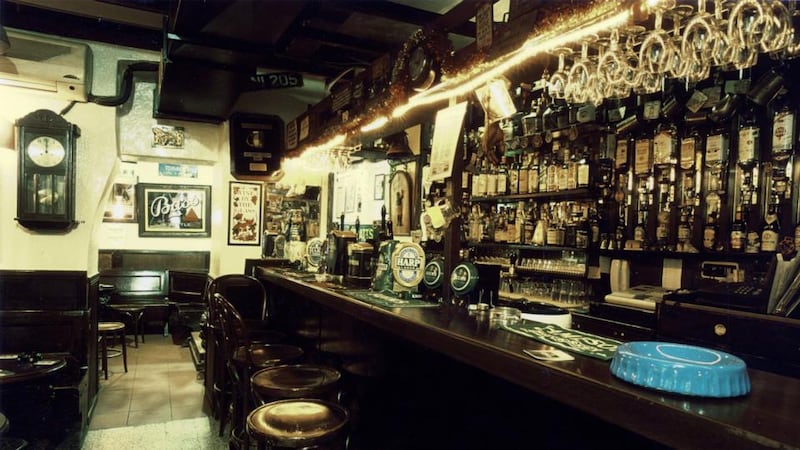
Rome’s Irish pubs
When we first came to Rome, 30 years ago, an Irish pub was the last place we wanted to visit. We were much more interested in exploring the Eternal City, trying to figure it out and, more importantly, trying to survive.
The Irish pub still doesn’t feature on my agenda, but my exile has corresponded with a period of remarkable growth in the Irish-pub-abroad industry. There are about 100 “Irish” bars in Rome today, although many of them are Irish in name only.
In these austere times in Italy the Irish pub manages to survive. Many young Italians reckon that a night at the Irish pub can work out cheaper than a night at a trattoria or pizzeria, because they drink little and eat less.
The other night we visited three – the Fiddler’s Elbow, the Druid’s Den and Finnegan’s – that are close to one another in the Maria Maggiore area and all Irish (or half-Irish) owned and run.
You might expect the Irish pub in Rome to be reliant on passing tourist trade. But Michael Burns, the Belfast man who owns Finnegan’s in Rome (he also owns another Finnegan’s in Florence), says that 70 per cent of his turnover comes from a fixed clientele of Italians and expats.
When we meet he is preparing for Ireland’s Six Nations rugby clash with Italy in Rome. For, of course, the Irish pub in Rome remains the meeting point for the short-term anglophonic expat community, not just for live Irish music but arguably even more for live TV sports events. From the bodhrán to the Sky subscription.
- Paddy Agnew


















